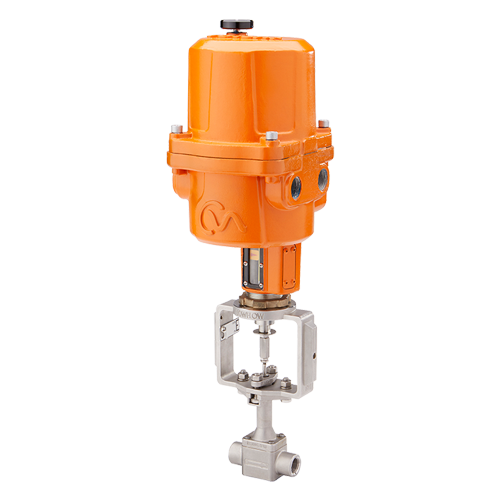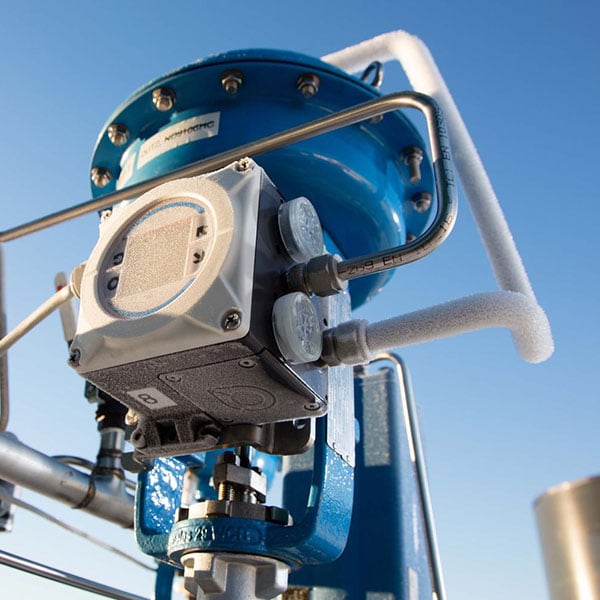How Control Valves Influence Energy Performance in Industrial Settings
How Control Valves Influence Energy Performance in Industrial Settings
Blog Article

Maximize Power Cost Savings and Comfort With Advanced Structure Automation Controls
In the world of modern-day design and center management, the combination of innovative structure automation controls stands as a crucial advancement. The convergence of technology and sustainability has birthed a new era where power efficiency, comfort optimization, and functional streamlining are no more achievable realities yet far-off goals. By taking advantage of the power of automation, buildings can adjust, react, and evolve in manner ins which were once unthinkable. The possibility for significant energy financial savings and boosted convenience is not simply a possibility but a guarantee waiting to be fulfilled. This standard shift in building monitoring holds the vital to unlocking a world where environmental conscientiousness and occupant wellness harmoniously coexist within the walls of our structures.
Power Effectiveness Conveniences
Power efficiency advantages can significantly reduce power consumption and operational prices in structures. By executing energy-efficient techniques and modern technologies, structure proprietors and drivers can achieve considerable financial savings while additionally adding to environmental sustainability. One of the main benefits of improving power performance in buildings is the reduction of energy bills. Energy-efficient systems, such as innovative structure automation controls, can optimize using resources like cooling, home heating, and lights, resulting in reduced energy expenditures gradually.
In addition, enhanced energy efficiency can lengthen the life expectancy of structure devices and systems. By running more effectively, HVAC systems, lighting components, and various other building elements experience much less damage, leading to minimized maintenance and substitute prices. Additionally, energy-efficient buildings commonly regulate higher residential property worths and rental prices, providing long-term financial advantages to proprietors.
Furthermore, power effectiveness can enhance owner convenience and performance. Appropriately regulated interior settings with ideal illumination and thermal problems create a more conducive and pleasant office, resulting in improved employee contentment and efficiency. In general, the energy performance benefits connected with innovative structure automation controls are multifaceted, including cost savings, environmental stewardship, and resident well-being.
Improved Convenience Control
Enhancing convenience control in structure environments requires an advanced combination of sophisticated automation systems for optimum occupant wellness. By making use of innovative structure automation controls, centers can customize the interior setting to meet the details requirements and choices of residents. control valves.
By incorporating these advanced controls, buildings can not just enhance comfort yet likewise boost power efficiency by enhancing system operations based on real tenancy and usage patterns. Inevitably, prioritizing owner convenience with innovative automation systems leads to a much more pleasurable and healthier interior atmosphere.
Operational Performance Improvements

Furthermore, the implementation of real-time surveillance and analytics devices allows building operators to recognize power ineffectiveness and operational anomalies quickly. have a peek at this site By constantly monitoring energy usage patterns and system efficiency metrics, changes can be made in real-time to enhance power consumption and make sure peak functional effectiveness. control valves. In addition, including demand response strategies right into building automation controls can even more enhance operational performance by dynamically changing power use based on grid conditions and prices signals
Indoor Climate Optimization
Efficient interior environment optimization is a fundamental aspect of building automation controls, making certain owners' convenience and wellness while maximizing energy cost savings. By utilizing sophisticated sensing units and controls, developing automation systems can continuously monitor and adjust temperature level, humidity degrees, air quality, and air flow to produce an ideal indoor environment. Preserving comfortable and constant problems not only boosts resident satisfaction however also boosts productivity and total well-being.
Indoor climate optimization also plays a vital role in energy effectiveness. By fine-tuning ventilation, air conditioning, and home heating systems based upon real-time information and tenancy patterns, constructing automation controls can substantially lower power usage - control valves. For circumstances, carrying out techniques such as demand-controlled ventilation and thermal zoning can help reduce energy waste while making sure that each area of the structure gets the required conditioning.

Sustainable Setting Creation
Structure automation controls not only enhance interior climate conditions for power efficiency and passenger comfort however additionally lay the foundation for developing a lasting environment through strategic monitoring of sources and systems. By incorporating innovative structure automation modern technologies, such as sensing units, actuators, and intelligent software program, centers can keep track of and readjust power use in real-time to reduce waste and reduce their carbon footprint. These systems enable anticipating upkeep, identifying prospective concerns prior to they intensify and enhancing devices efficiency to enhance longevity and effectiveness.
Furthermore, lasting setting development prolongs past power monitoring to incorporate water preservation, waste decrease, and indoor air top quality renovation. Structure automation controls can regulate water usage, find leaks, and guarantee correct garbage disposal methods, adding to general sustainability initiatives. Additionally, by monitoring and controlling air flow and filtering systems, these technologies enhance occupant health and wellness and performance while lowering power consumption related to a/c operations.
Final Thought
In final thought, advanced building automation manages deal substantial advantages in regards to energy savings, convenience control, functional effectiveness, interior climate optimization, and creating a sustainable setting. By executing these controls, structures can attain ideal efficiency while lowering power consumption and boosting passenger comfort. It is obvious that imp source making use of innovative automation technology is critical in enhancing structure performance and developing an extra lasting future.
Energy effectiveness advantages can dramatically lower power usage and operational costs in buildings. Generally, the power efficiency benefits associated with advanced structure automation controls are multifaceted, encompassing price financial savings, environmental stewardship, and occupant well-being.
Furthermore, incorporating need feedback approaches into building automation controls can even more enhance functional effectiveness by dynamically changing energy use based on grid conditions and pricing signals.
Structure automation controls not only enhance interior climate problems for power effectiveness and resident comfort however additionally lay the foundation for developing a sustainable setting with calculated management of systems and sources.In final thought, progressed structure automation regulates deal significant advantages in terms of power savings, convenience control, functional efficiency, indoor environment optimization, and creating a lasting environment.
Report this page